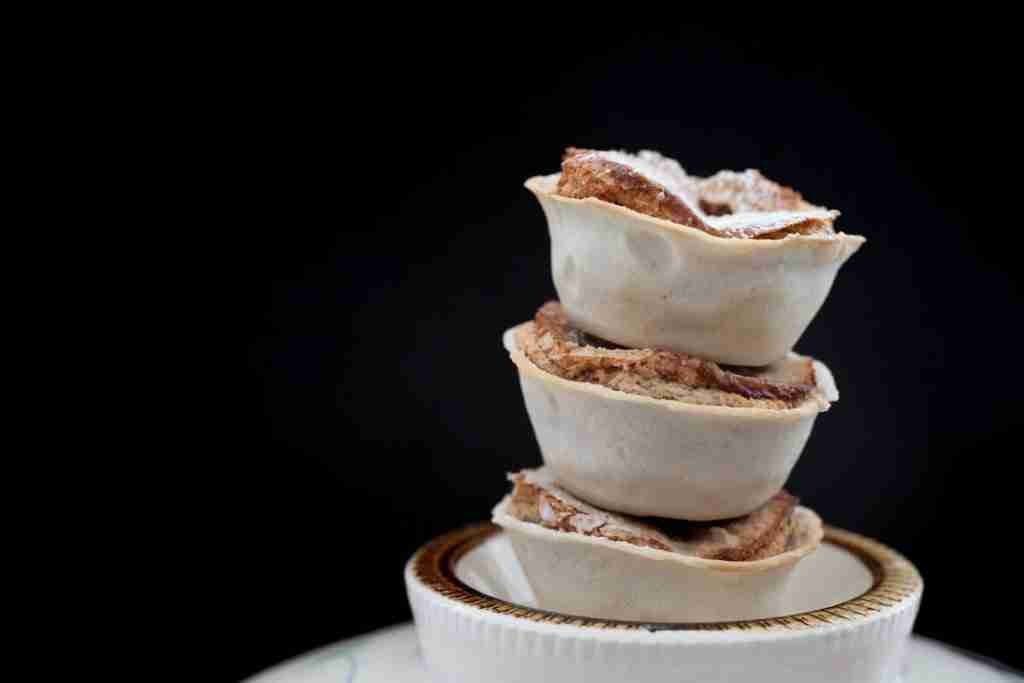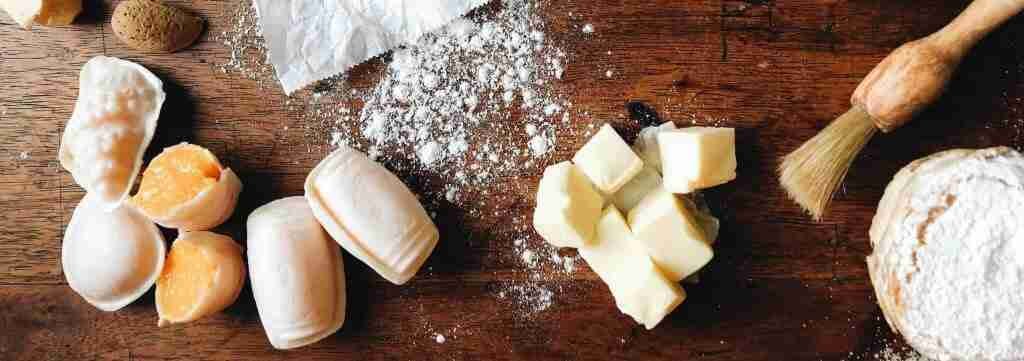We invited the author Cristina Castro, researcher and promoter of traditional confectionery, to share her account of some of the most fascinating finds of her research during the writing of “A Doçaria Portuguesa”.
When I first began my quest of finding Portugal’s sweets back in 2015, I was eagerly anticipating what I would find. Sweets with many centuries of history, others created recently by skilled hands, alas, a bit of everything. I had a good idea of all this before I began my path.
However, my expectations were greatly exceeded and many surprises came my way. I found unexpected sweets and stumbled upon very interesting stories. In the collection of books I have come to publish in the last two years—A Doçaria Portuguesa—I include the entirety of Portugal’s sweets and tell their history. For the purpose of this post, I have selected some of the sweets that surprised me, amongst a myriad of unexpected finds, some of which so unusual that made my mouth open in amazement… and appetite.
A fact that surprised me—or perhaps not so much—is that the confection of sweets is still an almost exclusively female activity. I say it still is because that reality is ancient, so much that we can find an article in the Manueline Ordinations that consigned women the exclusivity of the production and sale of sweets (alféloas) in Portugal. The idea is confirmed in our common imagination: mothers, grandmothers, sisters, and aunts are almost always the makers, the teachers, and the guardians of culinary traditions. It is also they who add, create, and innovate upon recipes, transforming at times, in the measure of their possibilities, what was made before. On the one side, women form a continuous chain with the past; on the other side, their hands mold the present and the future.
This reality is seminal to understand some of the transformations, but also to explain the continuity of some aspects of Portuguese sweets.
ALCOMONIAS
Grândola & Santiago do Cacém
Let’s look at a very interesting sweet that is made today between the counties of Grândola and Santiago do Cacém. It’s called alcomonia and has as main ingredients pine nuts, flour, and sugar. The name stands out as Arabic, and indeed, several elements point to that origin. First of all, its diamond shape is highly unusual in sweets, but a common shape in Arab and Oriental pastry. Another sign is in the meaning of the name, which derives from the term “cumin”. This sweet would have originally been made using cumin and fennel, later replaced by pine nuts due to the displacement to regions where these nuts were abundant. We know that recipes change according to the availability of ingredients. That’s why the modern alcomonias of Grândola and Santiago do Cacém are in a new process of change: the pine nut became expensive and led to an increase in the proportion of flour. If this continues, the pine nut will be completely replaced.

Alcomonias | Image by Gonçalo Barriga
BOLO DO TACHO
Serra de Monchique
Further south, in the Serra de Monchique, the tradition of the 1st of May includes the so-called bolo do tacho (pot cake), a paradigmatic sweet that was fruit of evolution through time, according to the availability of ingredients. Each person does it their own way, and every time it’s made it comes out different. The possibility of ingredients that are currently added to the mix includes flour, eggs, olive oil, lard, brandy, honey, cinnamon, chocolate, coffee, fennel, etc. Before, it would have been made with much less variety. As people gained access to more products, they started adding them to the cake. The mixture goes in the oven inside a pot, resulting in a cheese-like cake, a true delight. On the dawn of the 1st of May, the cake made during the eve integrates the popular Monchique tradition of “attacking the May”, i.e., the devil, which includes quite a commotion at dawn, roaming the streets, and picnics in the hills. It’s a manifestation of joy to cast away all negativity, and the bolo de tacho is pivotal in the celebrations.

Bolo do tacho | Image by Gonçalo Barriga
FARINHA TORRADA
Sesimbra
In several pastry shops of Sesimbra, we can find a sweet that was developed in a very similar way to the previous example. The farinha torrada (“toasted flour”) was taken by fisherman to the sea, and was a poor mix made up of whatever was available. It is now eaten in square portions with chocolate, cinnamon, lemon, eggs, sugar, and flour. The rule is: when you see chocolate in a sweet, we can be sure it’s a recent introduction.

Farinha torrada | Image by Gonçalo Barriga
AROUND THE ACORNS
Considering on-hand ingredients, in the Alentejo, acorns were some of the few products that helped to fill the stomach. Consumption of acorns was widespread but frowned upon as it was deemed to be animal fodder. Today, they are a valued ingredient, with applications in high-end cuisine and even cosmetics. But the Alentejanos are much too familiar with acorns and used them in a variety of ways, culinary-wise. That being said, the pastry with acorns that sweet-maker Isilda Ameixa of Estremoz, and pastry-chef Rui Coelho from Alandroal, have been producing in their establishments is to some extent not new. They are novelties in the sense that they are their own creations: pies, tarts, cookies, broinhas, and applying acorn flour, puré, cream, granulate, pieces, etc. But it isn’t a novelty in the sense that these flavours are familiar to the Alentejanos, and to which all Portuguese should be acquainted, just like the chestnut, for instance.

Acorn tart | Image by Gonçalo Barriga

Acorn custard tart | Image by Gonçalo Barriga
MANJAR-BRANCO & MANJAR DE CHAGAS
Coimbra & Vila Viçosa
In fact, we often come across something and observe it as exotic and innovative, when in fact it’s been around for ages. The manjar-branco and manjar das Chagas (both variations of blancmange) are perfect examples of this. The first is made with chicken, the latter with rabbit, both shredded. To many, it’s surprising to hear about sweets containing meat. But these two sweets have been around conventual pastry for centuries and have spread across Europe since the Middle Ages. Currently, the first is made in Coimbra, and the second in Vila Viçosa.
On the account of these two sweets, there are many others that break free from the stereotypes associated with conventual pastry, yet there are so many people surprised with things like the manjares. But is this what conventual pastry is about? Indeed.

Manjar das Chagas | Image by Gonçalo Barriga
BUCHO & CHOURIÇA DOCE
Monção & Melgaço
In popular confectionary, there are also cases of sweets with odd ingredients of animal origin. At least to according our modern standards. The bucho doce (sweet stomach), which we find in the region of Monção and Melgaço, is an assortment of bread, eggs, cinnamon, and sugar, traditionally cooked inside a pig’s stomach. Today, nobody really enjoys the hassle of using a stomach, using a linen towel instead. But it was the way things were made until very recently. There still is, however, a great variety of ingredients, in the same line of sweets like the farinha torrada and the bolo de tacho.

Bucho doce | Image by Gonçalo Barriga
Another example is the chouriça doce (sweet chorizo), a specialty of Alfândega da Fé. It’s made in similarity to a normal chouriço, mixing pig’s blood with bread, honey, sugar, almonds, olive oil, and cinnamon. As you can see, the universe of Portuguese confectionary—both popular and conventual—includes these specialties that are a part of our history and of our present, so don’t be a stranger and include them in your diet, just as you do with the bacalhau (codfish) and the cozido à Portuguesa.

Chouriça doce | Image by Gonçalo Barriga
QUEIJADA DE URTIGA & LANCHA POVEIRA
Forno de Algodres & Póvoa do Varzim
In the same sense, if you’re ever around Fornos de Algodres or Póvoa de Varzim, you shouldn’t be surprised if someone places a green pastry in front of you. In the case of the first location, you’ll be looking at a queijada de urtiga (nettle tart), at the second location, the lancha poveira, that contains rapini. Both are recent and inventive creations. Are nettles edible? Of course, they are. After washed and cooked, the end result is similar to spinach or other kindred greens. Therefore, rapini may be a pastry ingredient, be there art and will. Fortunately, in Portugal we have both.

Queijada de urtiga | Image by Gonçalo Barriga

Lancha poveira | Image by Gonçalo Barriga
FERRAMENTAS DE SÃO GONÇALO
Amarante
I could keep presenting an endless list of sweets that are surprising for various reasons, like the associated traditions, the history of their origin or name, or by some other fact unknown to most people. I’ll mention just another two cases that marveled me for another reason: their visual appearance.
The ferramentas de São Gonçalo (“tools of Saint Gonçalo”) are made in Amarante especially in January and June, during the religious celebrations of that saint, although you can find them for sale all year. There’s no fooling here: you look at the pastry and you can immediately tell it represents a phallus. This is because Saint Gonçalo is a matchmaker saint and the phallic shape is an ancient expression of love. Esthetically, it’s a blend of sacred and profane, resulting in a sweet that can only make you smile.

Ferramentas de S. Gonçalo | Image by Gonçalo Barriga
AMÊNDOAS COBERTAS
Torre de Moncorvo
In a very different plan, I was amazed by the aesthetics of Torre de Moncorvo’s main sweet. This is one of those cases that deserves a lot more attention and a lot more demand. It’s called amêndoa coberta (“covered almond”) and resembles little delicate corals. The ingredients are quite simple (almond and sugar syrup), but the production and final result are extraordinary. In spring you can hear the cobrideiras (the confectioners) spinning the almonds round and round, with thimbles on the tips of their fingers. Only a few days later will we have the delicate white corals ready in their bags.

Amêndoas cobertas | Image by Gonçalo Barriga
By this small sample I selected, I hope to have opened your appetite and curiosity. As you can see, Portuguese sweets transcend the pastel de nata (with due respect). Hold on to this idea and rediscover the art of Portuguese confectionary you thought you knew.
ABOUT THE AUTHOR
Cristina Castro is an avid lover of good gastronomy and gastronomical literature. Cristina writes and produces videos about Portuguese confectionary for the newspaper Público. She created and directs the project No Ponto that aims to research, register and promote the country’s sweets. Cristina has been publishing the collection A Doçaria Portuguesa, the most complete books about the history and present of Portuguese sweets.

The two volumes of A Doçaria Portuguesa are available for sale at https://noponto.pt.


